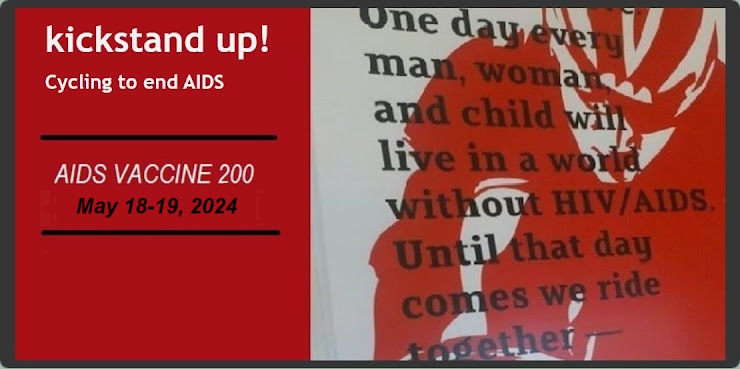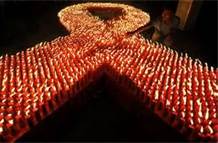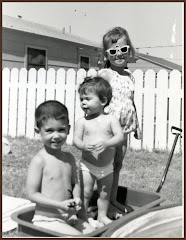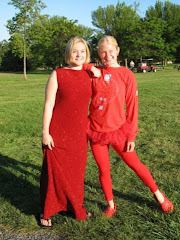Last weekend I found myself with several unplanned hours in San Francisco between a busy work week and an international flight so I slept in late, grabbed a latte and headed up California Street to ground myself with some desperately needed meditation time at the
Grace Cathedral outdoor labyrinth. I entered its winding path with intentional focus on gratitude and praise for the joy found in this very moment of warm sunshine, the sweet smell of jasmine, clanging trolleys full of tourists winding through a city festooned with rainbow flags and storefronts, gratitude for a city that so embraces its diversity. Upon reaching the labyrinth center, I paused, and then asked for more. What more could I hear, see, say or do to heighten the level of joy in this world? Opening my heart and mind for the answer, I stepped back out on the winding return path outward and listened.

Listening in silence is not an easy task for my busy mind. I’d hoped the monotony of a labyrinth walk would help tune out all competing thought but a song broke the silence and played endlessly over in my mind. I tried to dismiss it along with my shopping list and the reminder to check in for my flight but the song kept coming back.
“Turn your eyes upon Jesus,
Look full in His wonderful face,
And the things of earth will grow strangely dim,
In the light of His Glory and Grace.”
TURN YOUR
EYES UPON JESUS
Words and Music by Helen H. Lemmel, 1922
This was not a song I’d recently heard or even one I particularly love and it took several turns for me to consider that maybe I should pay attention; maybe this was the message I was asking to hear so I let its simple words flow through my mind as I twisted around the labyrinth and soon new images appeared – faces from the
AIDS Vaccine 200.
First I saw my teammates - two cyclists who’ve traveled this road with me each of the past 15 years. We aren’t getting any younger and it showed on this hard, early season ride but we won’t tolerate the thought of not doing something to stop others from enduring the pain we witnessed in each brother’s lost battle with AIDS.

Then came three loving faces of Atlanta family and friends who dropped busy schedules to offer on-site support by spending time and a meal with us. Their gestures of friendship and encouragement put a tangible face on our many donors who express compassionate commitment by contributing when we ask, with many also motivated to actions of their own choosing.

Next I saw the face of Dr. Mark Mulligan, head of
The Hope Clinic where Emory Vaccine Center conducts its
clinical trials. I met Dr. Mark on the 2011 AV200 when he handed me water at the first rest stop, asked why I was riding and listened with genuine interest to my answer. I watched him repeat that gesture with nearly every participant on that weekend’s ride. Dr. Mark approached me on registration night this May with the biggest grin, bursting to tell me how he had trained and raised money to ride all 214 miles right along with us this year (and he did!).

Finally, there was Joe. Our team had reached that last lunch stop with a well-timed plan: bathroom, sunscreen, food, water, go! At our pace under a hot sun, we calculated 20 minutes to accomplish this lunch plan if we hoped to arrive at the finish line in time. I was anxious sitting on that folding chair cramming in food I needed but didn’t want when my eyes caught sight of an outrageous pair of polyester apricot pants and shocking orange vest above which shone a glittering jewel over the widest smile I’d seen all day. Placing an icy cold bottle of water in my hand, he simply said “what else can I get you right now?” I instantly relaxed. This was Joe’s first AIDS ride experience. He’d been hustling in full theme costume all day in that searing heat but was still smiling as he served the last group of riders through his stop.
Each face held my answer by their reminder of the most important reason I ride – to be the face of love and acceptance that says above all else that every life is worthy of joy. The prevalence of HIV/AIDS stigma around the world remains a formidable barrier to prevention and treatment. The money we raise will eventually result in the scientific means for ending HIV/AIDS but the key to accessing it is the love we extend through compassionate concern for every infected person. I believe each of us is called to be the face of love and acceptance to all humanity, so for me the song that burst in my head is simple acknowledgement that the unconditional love expressed in each new face brought to that cause is exactly, and all we really need to access and extend life’s joy.
Thank you for helping the
Puget Sound Riders smash our goal by raising $11,016 for
HIV/AIDS research at the Emory Vaccine Center but even more importantly, thanks for showing your face of compassionate love to each one affected by HIV/AIDS.
Click into more faces of the AIDS Vaccine 200





















